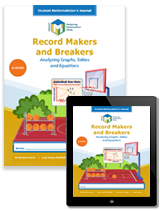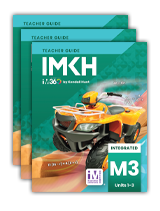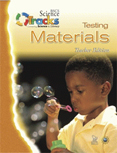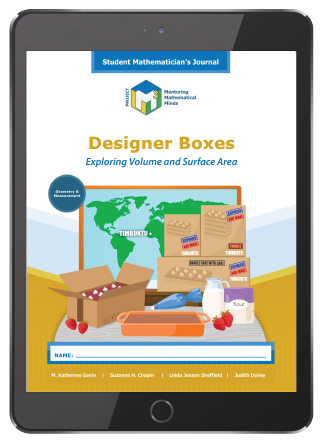Search Listing Name

product:
Project M3: Level 5-6: Record Makers and Breakers: Analyzing Graphs, Tables and Equations Student Mathematician's Journal + 1 Year License
The Student Mathematician’s Journal allows students to explore simulated or real-life problems and help them to think, write, and read like mathematicians. It encourages students to reflect on what they have learned in each lesson, think deeply about mathematics, and communicate in writing on worksheets.
In this unit, students explore algebra as a system of concepts used to represent relationships. They learn to express these relationships using words, equations, tables, and graphs. By exploring world records, some of the most astonishing feats ever achie
product:
No Quick Fix: Exploring Human Body Systems
No Quick Fix uses systems as the fundamental concept to help students in grades 6-8 understand cell and tuberculosis biology. In a series of widening concentric circles, students learn that cells are elements in larger systems, such as the immune system and the even larger system of the human body. Students also interact with the human social systems: health care and public education. They will take on the role of physician and begin to search for the cause and resolution of the problem. While unraveling the interacti
product:
OpenSciEd Unit 7.6: Earth's Resources & Human Impact Student Edition
OpenSciEd Middle School science program addresses all middle school NGSS standards. This comprehensive science curriculum empowers students to question, design, investigate, and solve the world around them.
- Phenomenon Based - Centered around exploring phenomena or solving problems
- Driven by Student Questions - Storyline based on students’ questions and ideas
- Grounded in Evidence - Incremental building and revision of ideas based on evidence
- Collaborative - class and teacher figure

product:
IM v.360: Integrated Math 3 Teacher Guide Set
IM® v.360 9-12 Math is an IM Certified curriculum providing t

product:
BSCS Science Tracks: Connecting Science And Literacy: Testing Materials Teacher Edition
SCIENCE & TECHNOLOGY-In this module, students investigate the materials from which objects are made. They discover that all materials have properties, such as color, hardness, transparency, and absorbency, and that people select a material for a certain purpose according to the properties of the material. Students compare materials in terms of their response to puffs of air and water. They compare structures that are made of different materials and explain why certain structures are made of specific materials.


